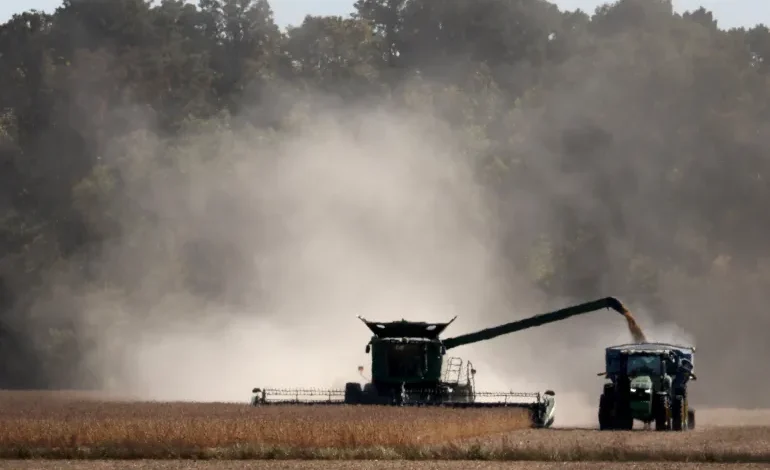Soya beans: China and EU’s secret weapon against Trump’s tariff wars?

European Union countries approved a set of retaliatory levies on the United States on Wednesday in response to President Donald Trump’s sweeping tariffs on America’s trade partners.
The tit for tat, which goes into force on April 15, comes as China also retaliated against Trump’s tariffs this week. The unfolding tariff spat has destabilised global markets and seen stocks fall across the board.Trump’s latest tariffs put a 20 percent levy on all EU goods. The tariff rate is 104 percent for Chinese goods.
The EU’s actions will target US aluminium and steel products, as well as American agricultural imports – key among them being soya beans – though these tariffs will likely be rolled out in a phased manner.
One of America’s biggest imports globally, could soya prove to be Washington’s Achilles heel that trading partners, including the EU and China, use to hit back effectively?
Here’s what to know about what a soya bean trade war could mean – and why it could be a big deal for the US, economically and politically:Why is soya so important for the US?
Soya, in the form of whole beans, animal feed, or oil, is a cornerstone of the US agricultural industry and represents one of America’s biggest agricultural revenue earners.It accounts for about 0.6 percent of GDP. The US has more than 500,000 soya bean producers, according to the Department of Agriculture’s Census of Agriculture. That includes at least 223,000 full-time jobs supported by the soya bean industry, according to a 2023 report for the National Oilseed Processors Association and the United Soybean Board.
The industry is worth $124bn in the US – that’s more than the entire economy of Kenya or Bulgaria.
Although local demand for soya in the US is growing, exports form the basis of the crop’s success. The US is presently the second-largest exporter of soya beans globally, selling more than half its yield to about 80 countries.Who does the US export soya beans to?
Soya beans contributed more than $27bn of US annual exports in 2023, according to data from the Observatory of Economic Complexity (OEC), an open-source data visualisation platform.
That’s more than any other agricultural export.
China, which imports $15bn of US soya beans, is by far the most important market, followed by the EU – and especially Germany, Spain and the Netherlands, which buy about $2bn worth of the oilseed.
Yet, both China and the EU are now at the heart of a global pushback against Trump’s tariffs. They were both on the “worst offender” list of countries hit by a barrage of tariff hikes announced by Trump last week. The list included countries that Washington claimed were unfairly taxing US goods in their countries.
Trump slapped the EU with a 20 percent surcharge, apart from 25 percent levies on steel and aluminum, which form a key part of the bloc’s exports to the US.










